General Interest Articles
General Interest articles are designed to appeal to everyone, whereas our collection of articles from the Scientific Literature will more likely resonate with those who like to get their teeth into much heavier topics.
We hope you enjoy this collection and welcome your feedback and requests for other topics.
Although the term, Nutrigenomics was not coined until 2004, the unfolding science of sulforaphane perfectly illustrates the principles of nutrigenomics in favourably influencing the expression of many of our protective genes. Sulforaphane activates around 200 of the genes governing human cellular defence mechanisms.

Although the term, Nutrigenomics was not coined until 2004, the unfolding science of sulforaphane perfectly illustrates the principles of nutrigenomics in favourably influencing the expression of many of our protective genes. Sulforaphane activates around 200 of the genes governing human cellular defence mechanisms.

Once hailed as the wonder drug for eradicating infectious bacterial diseases, the antibiotic has long since lost its shine. There is an increasing awareness that, although millions of lives in the past have been saved, antibiotics have been overused and are now responsible for numerous adverse effects. Such effects include the development of antibiotic-resistant bacteria, the erosion of the protective mucous lining of the intestines and major destruction of the ‘friendly’ microbiota that are essential for human health.
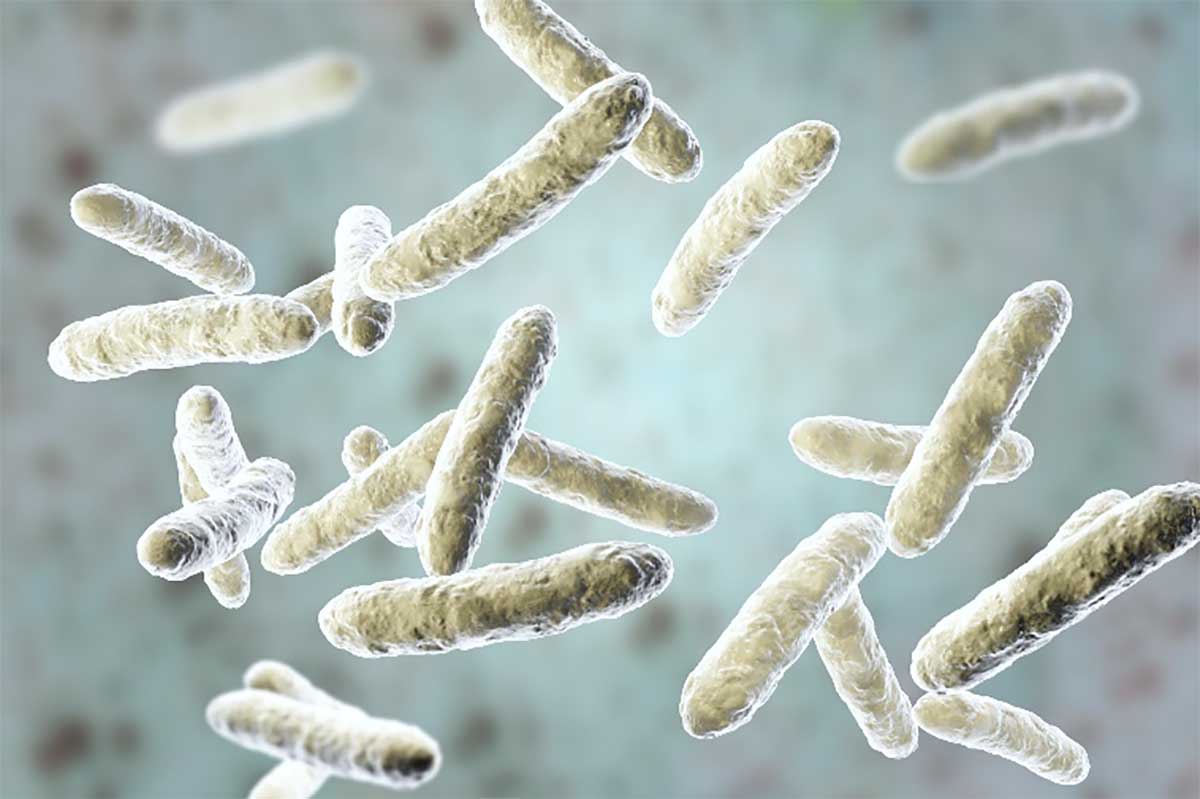
Once hailed as the wonder drug for eradicating infectious bacterial diseases, the antibiotic has long since lost its shine. There is an increasing awareness that, although millions of lives in the past have been saved, antibiotics have been overused and are now responsible for numerous adverse effects. Such effects include the development of antibiotic-resistant bacteria, the erosion of the protective mucous lining of the intestines and major destruction of the ‘friendly’ microbiota that are essential for human health.

Cell-Logic — a science-backed nutritional health company based in Brisbane, Australia, with presence in North America, South Africa, Europe and New Zealand — has just been cited in a recent report as one of the key participants in the growing global nutrigenomics market.
Joining Cell-Logic on the list of key global players in the report are big boys in the market — Danone, Unilever and Metagenics, among others.
Prepared by market analyst ‘Research and Markets’, and released earlier this year, the report points out that the global nutrigenomics market size is expected to reach USD 850.86 million by 2025, registering a compound annual growth rate of 16.48 percent. The report also points out that nutrigenomics can play a vital role in addressing illnesses such as obesity and cardiovascular diseases by offering personalised, gene-based diet.

Cell-Logic — a science-backed nutritional health company based in Brisbane, Australia, with presence in North America, South Africa, Europe and New Zealand — has just been cited in a recent report as one of the key participants in the growing global nutrigenomics market.
Joining Cell-Logic on the list of key global players in the report are big boys in the market — Danone, Unilever and Metagenics, among others.
Prepared by market analyst ‘Research and Markets’, and released earlier this year, the report points out that the global nutrigenomics market size is expected to reach USD 850.86 million by 2025, registering a compound annual growth rate of 16.48 percent. The report also points out that nutrigenomics can play a vital role in addressing illnesses such as obesity and cardiovascular diseases by offering personalised, gene-based diet.

Within the personalized nutrition space the field of nutrigenomics is touted as being able to tailor nutrition to an individual’s specific genetic makeup. With direct-to-consumer (DTC) services such as at-home genetic testing, consumers may now gain better insights into health and disease predisposition, as well as case-specific nutritional recommendations. Industry experts weigh in on the potential of nutrigenomics on well-being and the hurdles to be overcome.
Confusion as to what exactly nutrigenomics offers has led some to believe that nutrigenomics are able to predict disease risk, however, what nutrigenomics actually does is “provide the right recommendations for an individual so they can reduce their risk[of disease,” Dr. Ahmed El-Sohemy, Canada Research Chair in Nutrigenomics Department of Nutritional Sciences, University of Toronto and Founder and CSO of Nutrigenomix, tells NutritionInsight.
The field of nutrigenomics studies how an individual’s genes interact with their diet to affect their physiology and, consequently, their health. Research in this field can help uncover why some people respond differently from others to the same foods, beverages and supplements, Dr. El-Sohemy explains.
Dr. Christine Houghton Managing Director and CSO at Cell-Logic tells NutritionInsight that nutrigenomics has greatly extended our view of the effect of food molecules in human cells. “The term, ‘nutrigenomics’ simply translates to ‘food talking to your genes,’” she says.
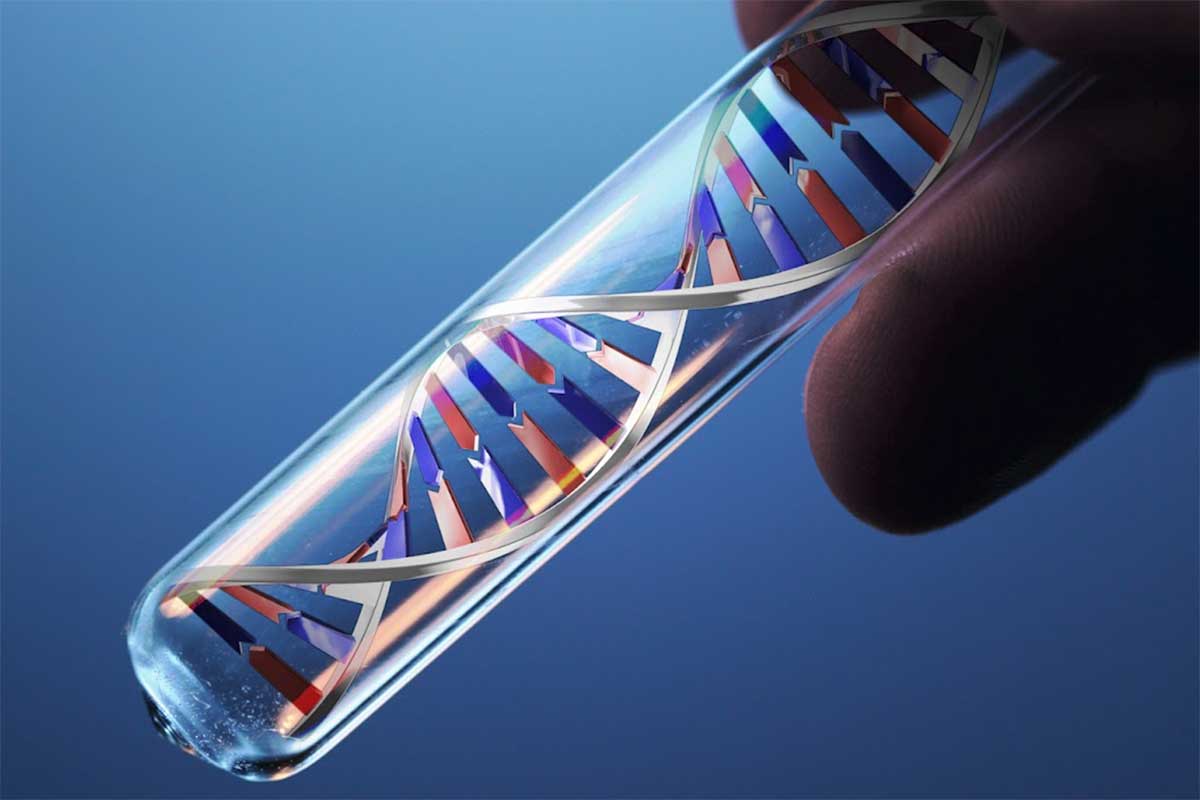
Within the personalized nutrition space the field of nutrigenomics is touted as being able to tailor nutrition to an individual’s specific genetic makeup. With direct-to-consumer (DTC) services such as at-home genetic testing, consumers may now gain better insights into health and disease predisposition, as well as case-specific nutritional recommendations. Industry experts weigh in on the potential of nutrigenomics on well-being and the hurdles to be overcome.
Confusion as to what exactly nutrigenomics offers has led some to believe that nutrigenomics are able to predict disease risk, however, what nutrigenomics actually does is “provide the right recommendations for an individual so they can reduce their risk[of disease,” Dr. Ahmed El-Sohemy, Canada Research Chair in Nutrigenomics Department of Nutritional Sciences, University of Toronto and Founder and CSO of Nutrigenomix, tells NutritionInsight.
The field of nutrigenomics studies how an individual’s genes interact with their diet to affect their physiology and, consequently, their health. Research in this field can help uncover why some people respond differently from others to the same foods, beverages and supplements, Dr. El-Sohemy explains.
Dr. Christine Houghton Managing Director and CSO at Cell-Logic tells NutritionInsight that nutrigenomics has greatly extended our view of the effect of food molecules in human cells. “The term, ‘nutrigenomics’ simply translates to ‘food talking to your genes,’” she says.

You might logically ask what masochistic streak in me would make me post such a headline! I’m bound to be shot down in a volley of gluten-free breadcrumbs!
The answer? Real as the phenomena of frank coeliac disease and non-coeliac gluten sensitivity (NCGS) might be, certain factors just don’t add up! A few are listed below.
I cannot simply sit back and watch an industry fuelled by over-processed gluten-free junk foods, over-ride common sense!
FACTOR NUMBER 1. The Mediterranean Diet continues to be acknowledged for its superior effects on human health. For thousands of years, people in this region have consumed diets rich in grains – including a high proportion of gluten-containing grains. And yet, where is the evidence that gluten adversely affects these populations? Proponents of gluten-free diets say that the wheat has been modified over decades and whereas it was once tolerated, now it isn’t. This may or may not be correct; no evidence yet!

You might logically ask what masochistic streak in me would make me post such a headline! I’m bound to be shot down in a volley of gluten-free breadcrumbs!
The answer? Real as the phenomena of frank coeliac disease and non-coeliac gluten sensitivity (NCGS) might be, certain factors just don’t add up! A few are listed below.
I cannot simply sit back and watch an industry fuelled by over-processed gluten-free junk foods, over-ride common sense!
FACTOR NUMBER 1. The Mediterranean Diet continues to be acknowledged for its superior effects on human health. For thousands of years, people in this region have consumed diets rich in grains – including a high proportion of gluten-containing grains. And yet, where is the evidence that gluten adversely affects these populations? Proponents of gluten-free diets say that the wheat has been modified over decades and whereas it was once tolerated, now it isn’t. This may or may not be correct; no evidence yet!

Getting to the cause
Cholesterol is clearly on the radar of GP’s as a primary treatment strategy for CVD with Statins successfully marketed as the number one go to. Yet a growing body of research points in another direction – to redox imbalances and inflammation as primary upstream causes of CVD.

Getting to the cause
Cholesterol is clearly on the radar of GP’s as a primary treatment strategy for CVD with Statins successfully marketed as the number one go to. Yet a growing body of research points in another direction – to redox imbalances and inflammation as primary upstream causes of CVD.

Our modern-day epidemic of chronic diseases has taken yet another ugly twist, presented by the dilemma of ‘overabundance’ — too many wrong choices and too few right ones.
Although it’s fair to say that developed countries no longer face the stress of war or starvation, our cells still continue to come under an ever-increasing barrage of oxidative stress, inflammation and toxins.

Our modern-day epidemic of chronic diseases has taken yet another ugly twist, presented by the dilemma of ‘overabundance’ — too many wrong choices and too few right ones.
Although it’s fair to say that developed countries no longer face the stress of war or starvation, our cells still continue to come under an ever-increasing barrage of oxidative stress, inflammation and toxins.

In this series, we break down all you need to know about antioxidants, with Part 2 last week looking at where the antioxidant story began. This week, in Part 3, Cell-Logic’s Senior Scientist Dr Christine Houghton explores the new ‘Nutrigenomics’ era and the changing trends in nutritional medicine. We now understand that free radicals and ‘antioxidants’, together with a range of other endogenous compounds and food-derived biomolecules, are all actors in a cellular script that is constantly changing to adapt to the environment in which the cell finds itself. What’s so exciting from a clinical standpoint is that many of the intracellular signalling pathways can be influenced by food-derived biomolecules.

In this series, we break down all you need to know about antioxidants, with Part 2 last week looking at where the antioxidant story began. This week, in Part 3, Cell-Logic’s Senior Scientist Dr Christine Houghton explores the new ‘Nutrigenomics’ era and the changing trends in nutritional medicine. We now understand that free radicals and ‘antioxidants’, together with a range of other endogenous compounds and food-derived biomolecules, are all actors in a cellular script that is constantly changing to adapt to the environment in which the cell finds itself. What’s so exciting from a clinical standpoint is that many of the intracellular signalling pathways can be influenced by food-derived biomolecules.

The Benefit of Reviewing Part 1 – One of the most misunderstood topics in Nutritional Medicine is that of so-called ‘Antioxidants’. In Part 1, we looked at how ‘antioxidants’ are classified as Primary and Secondary and highlighted the differences between the typical ’antioxidant vitamins’ and the endogenous Antioxidant Enzymes such as Superoxide dismutase, Glutathione peroxidase and Catalase. Where typical ‘antioxidants’ such as vitamin C, E and beta-carotene are capable of quenching one free radical per antioxidant molecule, the Antioxidant Enzymes can quench several million free radicals per minute1. This little-known fact may help explain why so many clinical trials using ‘antioxidant’ vitamins have failed. What’s most exciting about the new understanding of the power of the Antioxidant Enzymes is that specific phytochemicals can ‘switch on’ that part of the DNA which codes for these and other cell-protective endogenous compounds. We are indeed on the cusp of a new paradigm in Nutritional Medicine as we use Nutrigenomics to optimise cellular function and cellular defences.
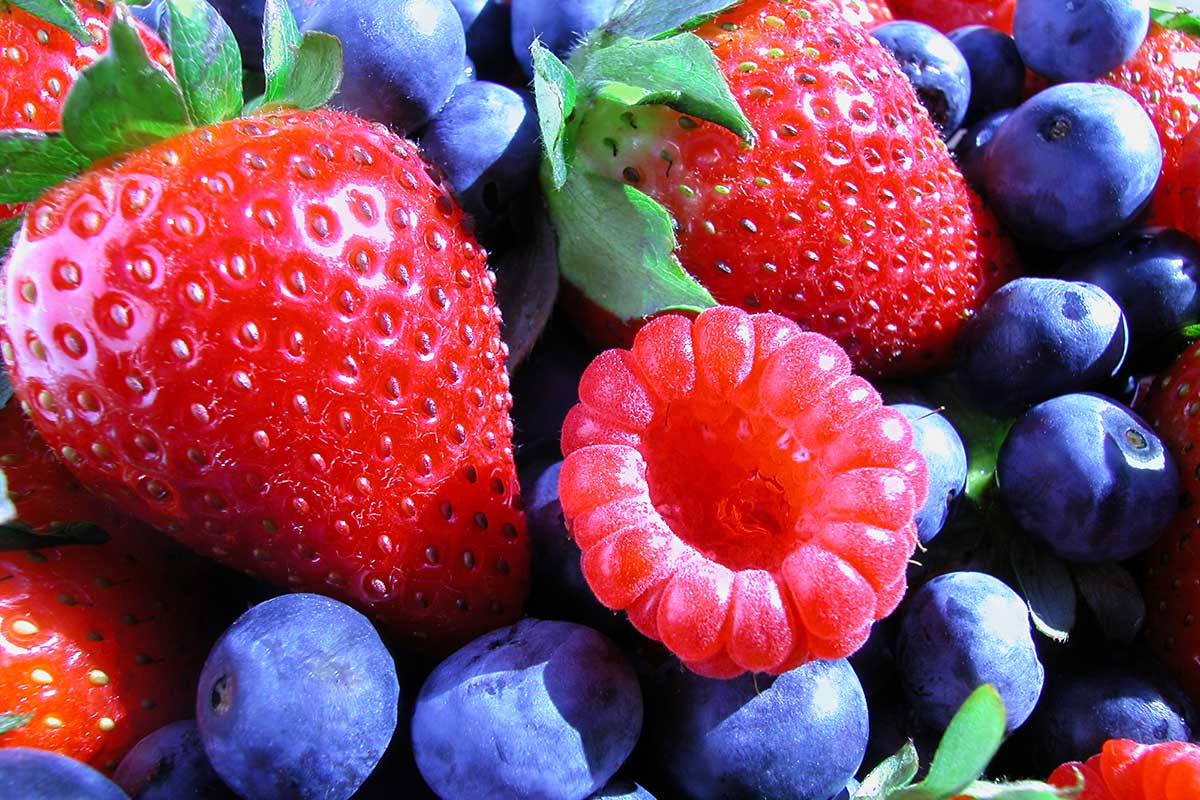
The Benefit of Reviewing Part 1 – One of the most misunderstood topics in Nutritional Medicine is that of so-called ‘Antioxidants’. In Part 1, we looked at how ‘antioxidants’ are classified as Primary and Secondary and highlighted the differences between the typical ’antioxidant vitamins’ and the endogenous Antioxidant Enzymes such as Superoxide dismutase, Glutathione peroxidase and Catalase. Where typical ‘antioxidants’ such as vitamin C, E and beta-carotene are capable of quenching one free radical per antioxidant molecule, the Antioxidant Enzymes can quench several million free radicals per minute1. This little-known fact may help explain why so many clinical trials using ‘antioxidant’ vitamins have failed. What’s most exciting about the new understanding of the power of the Antioxidant Enzymes is that specific phytochemicals can ‘switch on’ that part of the DNA which codes for these and other cell-protective endogenous compounds. We are indeed on the cusp of a new paradigm in Nutritional Medicine as we use Nutrigenomics to optimise cellular function and cellular defences.

The Benefit of Hindsight – If I had known when I was in practice what I know now about ‘antioxidants’, I may have achieved far better clinical outcomes in some of those more difficult-to resolve patient conditions. It was only after I moved out of practice in 2004 following a 30-year career in Nutritional Medicine that I had t he time available to independently research the many technical issues that underpin the products we prescribe. Based completely on findings from the scientific literature, what you will read here runs counter to most of the popular assumptions surrounding this subject. It may well challenge your established views on w hat antioxidants are and what they are not – and on what you can expect them to achieve clinically.
It has also become very clear to me that the term ‘antioxidants’ does not refer to some amorphous group of biochemical substances all doing the same thing. To state that a patient is taking ‘antioxidants’ is just as meaningless as saying that the patient is taking ‘herbs’.

The Benefit of Hindsight – If I had known when I was in practice what I know now about ‘antioxidants’, I may have achieved far better clinical outcomes in some of those more difficult-to resolve patient conditions. It was only after I moved out of practice in 2004 following a 30-year career in Nutritional Medicine that I had t he time available to independently research the many technical issues that underpin the products we prescribe. Based completely on findings from the scientific literature, what you will read here runs counter to most of the popular assumptions surrounding this subject. It may well challenge your established views on w hat antioxidants are and what they are not – and on what you can expect them to achieve clinically.
It has also become very clear to me that the term ‘antioxidants’ does not refer to some amorphous group of biochemical substances all doing the same thing. To state that a patient is taking ‘antioxidants’ is just as meaningless as saying that the patient is taking ‘herbs’.

The Veggie Dilemma – Growing up, we would have heard our mums say that veggies are good for us. Depending on which end of the veggies “love-hate” spectrum we were, many of us would have then tried to do the right thing by including a portion of greens on our plates during mealtimes. At the back of our minds, we always knew that mum was right.
While mum was indeed right all along in getting us to eat our greens, it is hard to ignore that Mother Nature still has much more potent power in store for us in her armour, just waiting to be tapped.
Cruciferous veggies in particular — such as broccoli, cauliflower, cabbage, and kale — while generally associated with providing a reduced cancer risk in humans, are not always consumed at sufficient levels to bring about a real and lasting change in our health.
To address this, a 2013 review investigated whether the full potential of one of these crucifers — the not-so-popular broccoli — is being effectively utilised for the benefit of human health.

The Veggie Dilemma – Growing up, we would have heard our mums say that veggies are good for us. Depending on which end of the veggies “love-hate” spectrum we were, many of us would have then tried to do the right thing by including a portion of greens on our plates during mealtimes. At the back of our minds, we always knew that mum was right.
While mum was indeed right all along in getting us to eat our greens, it is hard to ignore that Mother Nature still has much more potent power in store for us in her armour, just waiting to be tapped.
Cruciferous veggies in particular — such as broccoli, cauliflower, cabbage, and kale — while generally associated with providing a reduced cancer risk in humans, are not always consumed at sufficient levels to bring about a real and lasting change in our health.
To address this, a 2013 review investigated whether the full potential of one of these crucifers — the not-so-popular broccoli — is being effectively utilised for the benefit of human health.

It’s the first day of June today — the official start to winter in the Southern hemisphere. While many associate the winter season with hot chocolate and cosy fireplaces, it is also known for its sharp rise in the incidence of flu cases, which if nasty enough, can even cause us to be away from work or school for several days on end.
As with any condition, it is easier (and cheaper) to prevent rather than to cure once the condition is entrenched. This is where nutritional intervention plays a powerful role in prevention.
Nutritional medicine understands that microbes (or germs) are ever-present in the environment and are continuously attempting to invade warm cosy environments like human cells where they multiply. Viruses, in particular, have no way of replicating unless they can hijack our cellular ‘machinery’. And when they start multiplying, they double their population about every 20 minutes — or even less. In practically no time at all, they dominate in huge numbers in the body.
The job of our immune system is to mount a range of challenges to prevent the invasion. Healthy cells are well-equipped to prevent infection. When it appears that we have ‘caught’ something, it really means that our immune system, for whatever reason, was unable to mount the required challenge. That is why a family or other group of people may all have been exposed to the same germ — but only a few ‘catch’

It’s the first day of June today — the official start to winter in the Southern hemisphere. While many associate the winter season with hot chocolate and cosy fireplaces, it is also known for its sharp rise in the incidence of flu cases, which if nasty enough, can even cause us to be away from work or school for several days on end.
As with any condition, it is easier (and cheaper) to prevent rather than to cure once the condition is entrenched. This is where nutritional intervention plays a powerful role in prevention.
Nutritional medicine understands that microbes (or germs) are ever-present in the environment and are continuously attempting to invade warm cosy environments like human cells where they multiply. Viruses, in particular, have no way of replicating unless they can hijack our cellular ‘machinery’. And when they start multiplying, they double their population about every 20 minutes — or even less. In practically no time at all, they dominate in huge numbers in the body.
The job of our immune system is to mount a range of challenges to prevent the invasion. Healthy cells are well-equipped to prevent infection. When it appears that we have ‘caught’ something, it really means that our immune system, for whatever reason, was unable to mount the required challenge. That is why a family or other group of people may all have been exposed to the same germ — but only a few ‘catch’

Broccoli Sprouts – Top of the Cruciferous Vegetable List
In the world of nutrition, people have known for a long time that the sprouts of cruciferous vegetables and legumes are powerhouses of valuable nutrients. But with a growing body of evidence supporting a cluster of impressive health benefits, the humble broccoli sprout has come to the forefront – and clinicians and researchers in nutrition are finding new ways to harness its unique power.
The secret to the health benefits of this remarkable food lies in the bioactive compound sulforaphane, which is generated in high concentrations when broccoli sprouts are consumed. Over a thousand published studies have identified sulforaphane as one of the most potent food-derived molecules of our era, and that some truly remarkable health benefits that can be accessed through its main source, broccoli sprouts.
The bioactives from broccoli sprouts can influence many of the genes that govern cellular function, ‘turning up’ the ones whose expression is beneficial in maintaining health, and ‘turning down’ the ones that result in maladaptive outcomes.

Broccoli Sprouts – Top of the Cruciferous Vegetable List
In the world of nutrition, people have known for a long time that the sprouts of cruciferous vegetables and legumes are powerhouses of valuable nutrients. But with a growing body of evidence supporting a cluster of impressive health benefits, the humble broccoli sprout has come to the forefront – and clinicians and researchers in nutrition are finding new ways to harness its unique power.
The secret to the health benefits of this remarkable food lies in the bioactive compound sulforaphane, which is generated in high concentrations when broccoli sprouts are consumed. Over a thousand published studies have identified sulforaphane as one of the most potent food-derived molecules of our era, and that some truly remarkable health benefits that can be accessed through its main source, broccoli sprouts.
The bioactives from broccoli sprouts can influence many of the genes that govern cellular function, ‘turning up’ the ones whose expression is beneficial in maintaining health, and ‘turning down’ the ones that result in maladaptive outcomes.

Findings
Daily intake of 30 grams of fresh broccoli sprouts by 40 overweight adults resulted in 2 key findings:
- Significant reduction in Interleukin-6 (Il-6) over the 70 days of daily broccoli sprout consumption, with the effect persisting for around 3 weeks after the sprouts were discontinued. (Fig. 1)
- Significant reduction in C-reactive protein (CRP) over the 70 days of daily broccoli sprout consumption which did not persist after discontinuation of the sprouts. (Fig. 1)
Background
SECONDARY EFFECTS OF OBESITY Obesity is linked to inflammation which contributes to Type 2 diabetes and cardiovascular as common co-morbities. Il-6 is associated with a broad range of physiological abnormalities underpinned by inflammation and CRP is known to be associated with cardiovascular disease risk.
BROCCOLI SPROUTS – CLINICAL TRIAL EVIDENCE Broccoli sprouts are known to be a very rich source of sulforaphane, the bioactive molecule to which a range of beneficial effects are attributed. A number of clinical trials have demonstrated that positive health outcomes occurred with sulforaphane-yielding supplements and fresh sprouts.

Findings
Daily intake of 30 grams of fresh broccoli sprouts by 40 overweight adults resulted in 2 key findings:
- Significant reduction in Interleukin-6 (Il-6) over the 70 days of daily broccoli sprout consumption, with the effect persisting for around 3 weeks after the sprouts were discontinued. (Fig. 1)
- Significant reduction in C-reactive protein (CRP) over the 70 days of daily broccoli sprout consumption which did not persist after discontinuation of the sprouts. (Fig. 1)
Background
SECONDARY EFFECTS OF OBESITY Obesity is linked to inflammation which contributes to Type 2 diabetes and cardiovascular as common co-morbities. Il-6 is associated with a broad range of physiological abnormalities underpinned by inflammation and CRP is known to be associated with cardiovascular disease risk.
BROCCOLI SPROUTS – CLINICAL TRIAL EVIDENCE Broccoli sprouts are known to be a very rich source of sulforaphane, the bioactive molecule to which a range of beneficial effects are attributed. A number of clinical trials have demonstrated that positive health outcomes occurred with sulforaphane-yielding supplements and fresh sprouts.

Independent scientific tests confirm that EnduraCELL yields 3.5 times more Sulforaphane per gram and dose than any other broccoli sprout product on the market.
Every single batch of EnduraCell is assayed to provide its Sulforaphane Yield
EnduraCell consistently yields Sulforaphane levels that can readily match the doses used in a range of clinical trials. What this means is that a practical daily dose of EnduraCell can be expected to provide the expected response. It is for this reason that EnduraCell is confidently recommended by the many clinicians who know how to apply it in appropriate clinical situations.

Independent scientific tests confirm that EnduraCELL yields 3.5 times more Sulforaphane per gram and dose than any other broccoli sprout product on the market.
Every single batch of EnduraCell is assayed to provide its Sulforaphane Yield
EnduraCell consistently yields Sulforaphane levels that can readily match the doses used in a range of clinical trials. What this means is that a practical daily dose of EnduraCell can be expected to provide the expected response. It is for this reason that EnduraCell is confidently recommended by the many clinicians who know how to apply it in appropriate clinical situations.

If you’ve ever wondered why some people are better able than others to retain their good health while they age, you probably won’t be surprised to know the answer lies in their genes.
But while our actual DNA is non-negotiable—and determines what genetic issues we’re likely to have to deal with as we grow older—our nutrition can change the way our genes are expressed. In essence, with the right nutritional balance, our pre-programmed physiological challenges don’t necessarily have to manifest during our lifetime.
Supplements developed through evidence-based research in Nutrigenomics provide the key to combating age-related health problems that affect our quality of life in our later years. Using naturally occurring food-derived molecules, Nutrigenomics is using science to validate what nature has already provided, and to help us age healthier and more actively in the future.
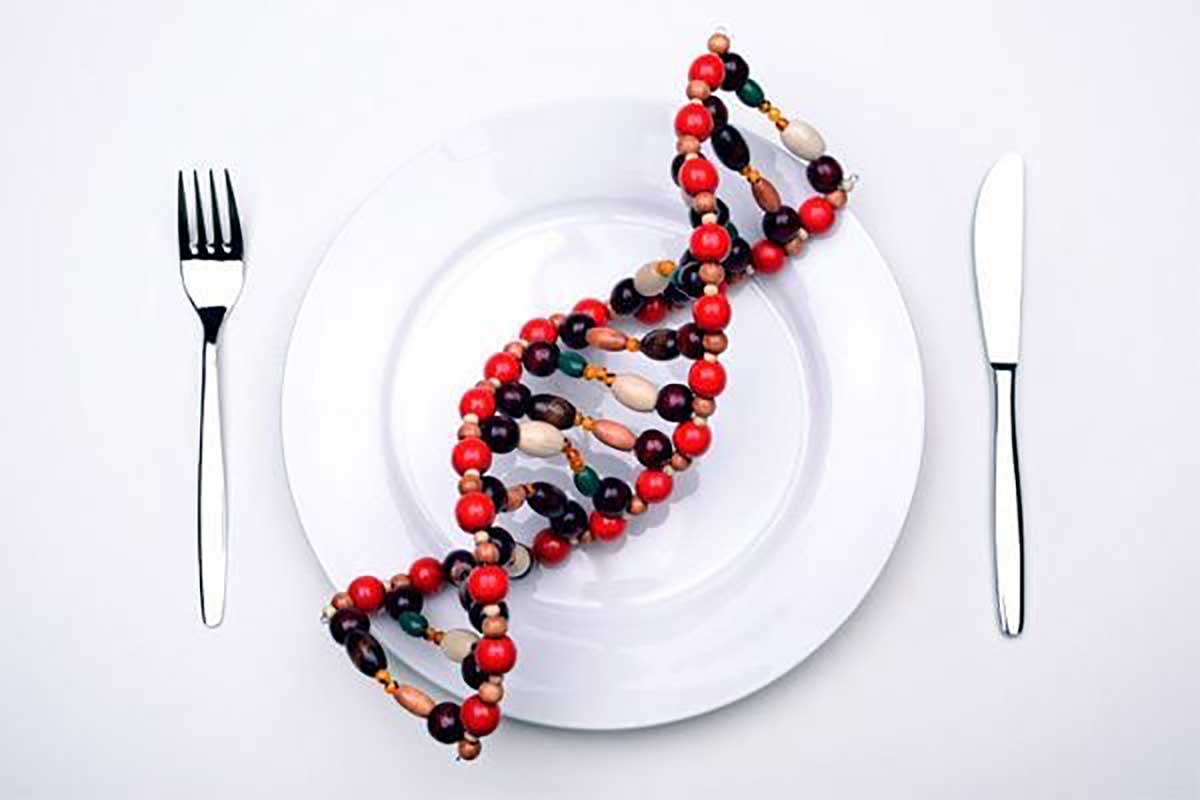
If you’ve ever wondered why some people are better able than others to retain their good health while they age, you probably won’t be surprised to know the answer lies in their genes.
But while our actual DNA is non-negotiable—and determines what genetic issues we’re likely to have to deal with as we grow older—our nutrition can change the way our genes are expressed. In essence, with the right nutritional balance, our pre-programmed physiological challenges don’t necessarily have to manifest during our lifetime.
Supplements developed through evidence-based research in Nutrigenomics provide the key to combating age-related health problems that affect our quality of life in our later years. Using naturally occurring food-derived molecules, Nutrigenomics is using science to validate what nature has already provided, and to help us age healthier and more actively in the future.

Bids to ‘stop mandatory vaccination’ will need a better argument than the time-worn mercury scare-mongering, supported by an image of a cute baby! FDA’s 2014 comment follows: “Since 2001, no new vaccine licensed by FDA for use in children has contained thimerosal and all vaccines routinely recommended by CDC for children younger than 6 years of age have been thimerosal-free, or contain only trace amounts of thimerosal, except for some formulations of influenza vaccine. Sep 9, 2014. Nor has thimerosal been used in Australia since 2000.

Bids to ‘stop mandatory vaccination’ will need a better argument than the time-worn mercury scare-mongering, supported by an image of a cute baby! FDA’s 2014 comment follows: “Since 2001, no new vaccine licensed by FDA for use in children has contained thimerosal and all vaccines routinely recommended by CDC for children younger than 6 years of age have been thimerosal-free, or contain only trace amounts of thimerosal, except for some formulations of influenza vaccine. Sep 9, 2014. Nor has thimerosal been used in Australia since 2000.

You might be dedicated to giving your child a ‘good start in life’ by offering only the healthiest of food but a newly-published study shows that smoking in the child’s presence is itself a risk factor for Type 2 diabetes. Where we’ve been conditioned to think that Type 2 diabetes is a diet-related disease associated with over-consumption of carbohydrates and fats, this hot-off-the-press systematic review in Lancet Diabetes Endocrinology shows that even passive smoking is a significant risk factor.

You might be dedicated to giving your child a ‘good start in life’ by offering only the healthiest of food but a newly-published study shows that smoking in the child’s presence is itself a risk factor for Type 2 diabetes. Where we’ve been conditioned to think that Type 2 diabetes is a diet-related disease associated with over-consumption of carbohydrates and fats, this hot-off-the-press systematic review in Lancet Diabetes Endocrinology shows that even passive smoking is a significant risk factor.

It’s always a great honour for a company’s work to be recognised by its peers. Naturally, we were delighted at the end of 2015 to receive the 2015 Award for Innovation in Nutraceutical Products & Best for Complementary Health Care Solutions – Australia.
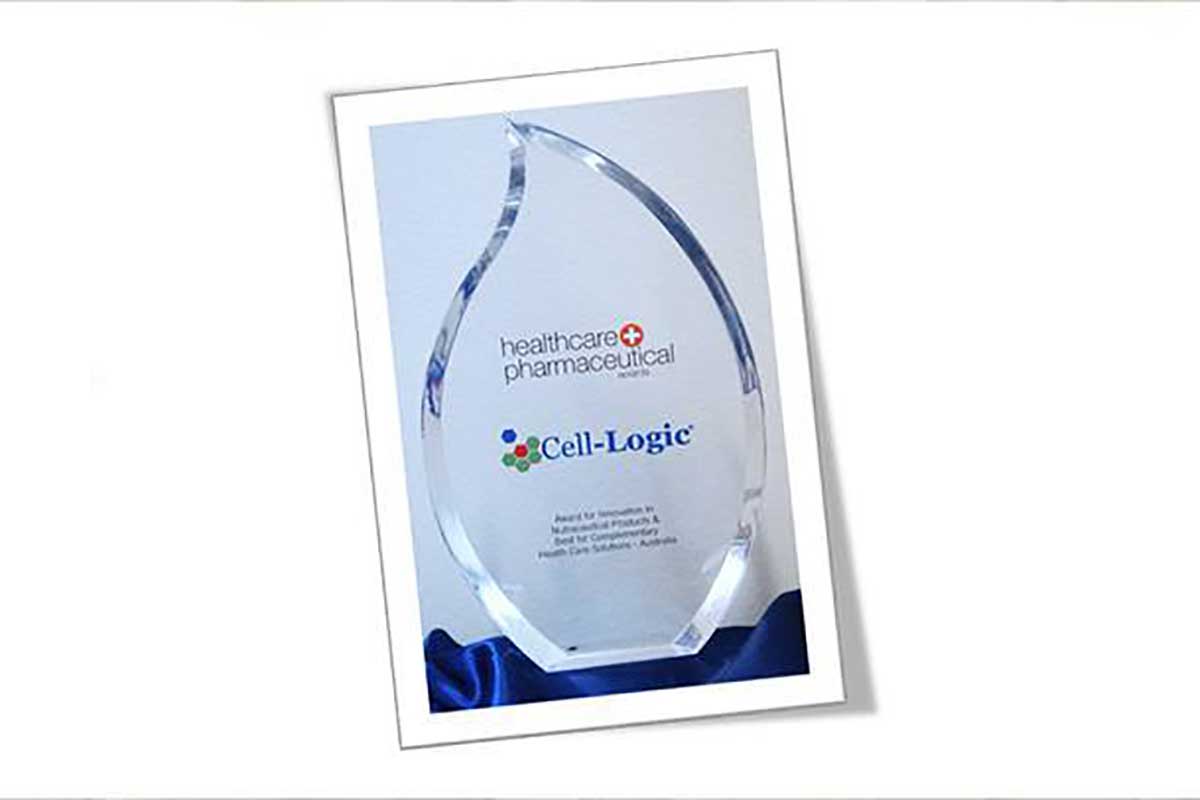
It’s always a great honour for a company’s work to be recognised by its peers. Naturally, we were delighted at the end of 2015 to receive the 2015 Award for Innovation in Nutraceutical Products & Best for Complementary Health Care Solutions – Australia.

Two important parts of the ageing puzzle have recently been revealed and nutrigenomically-active CardiOS directly addresses these aspects of the ageing process. One of the realities of life is that ageing is inevitable. Clearly, some of us age more ‘gracefully’ than others, with some retaining a keen mind even though the physical form visibly changes. We may blame it on genetics or we may blame it on lifestyle but in truth, we know little about how to modify this process.
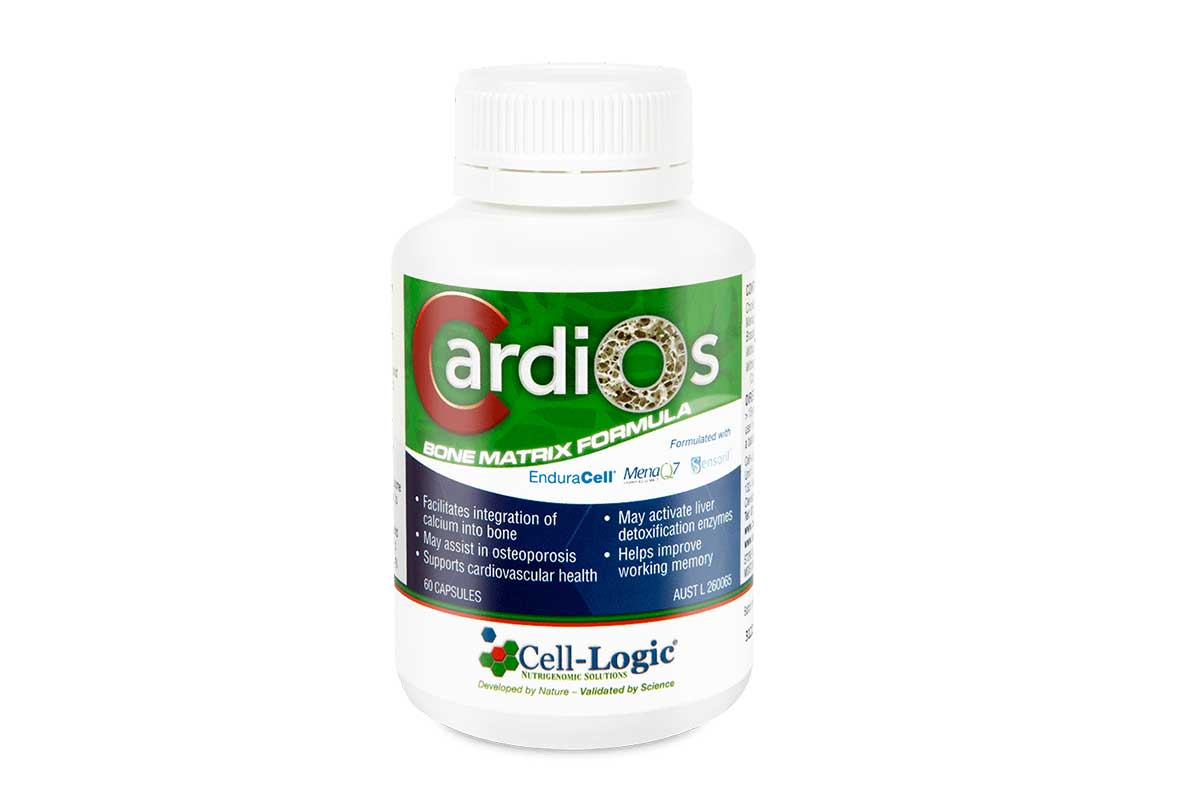
Two important parts of the ageing puzzle have recently been revealed and nutrigenomically-active CardiOS directly addresses these aspects of the ageing process. One of the realities of life is that ageing is inevitable. Clearly, some of us age more ‘gracefully’ than others, with some retaining a keen mind even though the physical form visibly changes. We may blame it on genetics or we may blame it on lifestyle but in truth, we know little about how to modify this process.

Subscribe to our Newsletter
"*" indicates required fields

